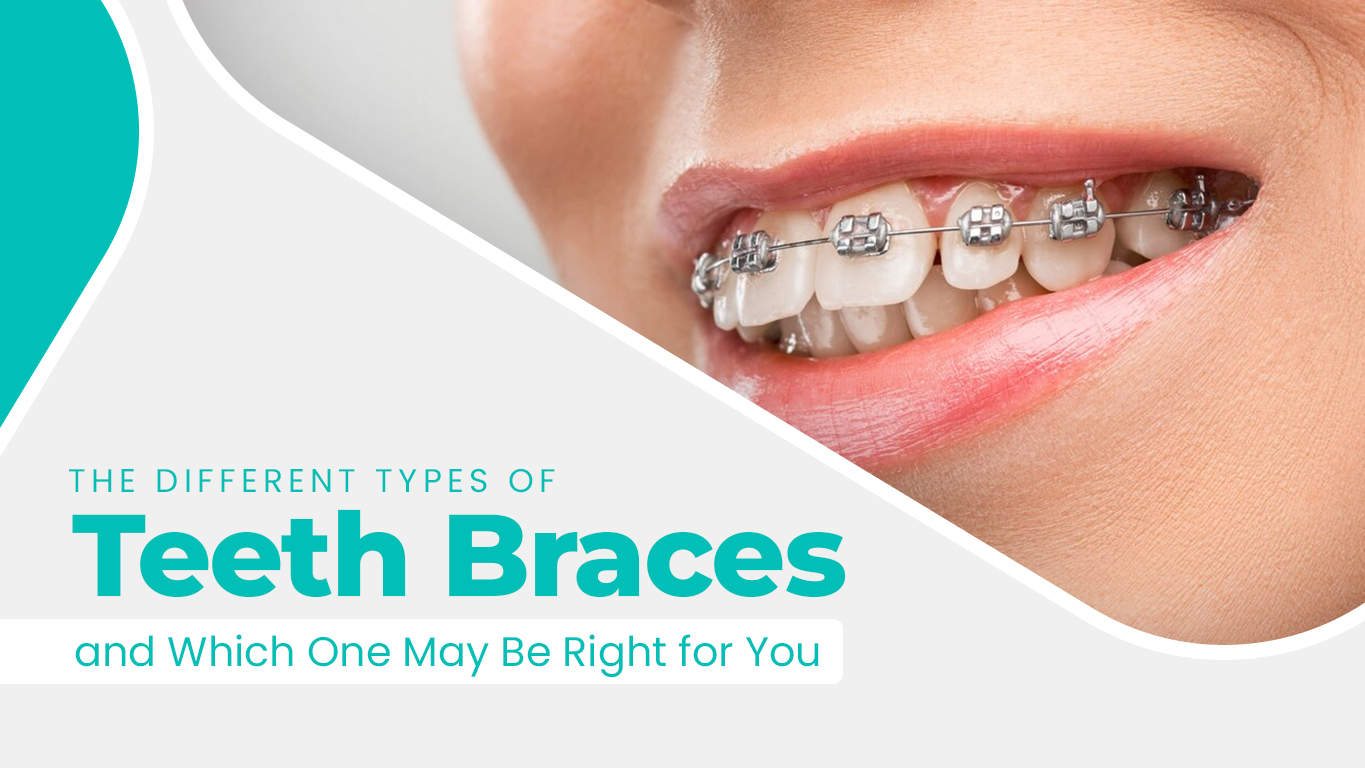Getting braces can be an exciting yet daunting experience for both children and adults. With all the different types available nowadays, from traditional metal braces to clear aligners, it can be tough to determine which kind is the best option for your unique smile situation and orthodontic needs. Here’s a helpful overview of the main types of braces, how they work, and key factors to consider when evaluating the pros and cons of each option and choosing the ideal braces for your lifestyle, budget, and oral health goals. Consultations with your dentist can provide further guidance to help you select the braces that will give you the healthy, straight smile you want in a way that fits your individual requirements
Types of Teeth Braces
- Traditional Metal Braces
Traditional metal braces are the most common and recognized orthodontic appliances. They consist of stainless steel brackets that are bonded to the front surface of each tooth using a special dental adhesive. The brackets are then connected together using a thin arch wire that runs through the bracket slots.
The dentist will periodically tighten or adjust this arch wire over the course of treatment, which applies pressure to the teeth and causes them to shift into proper alignment. Metal braces utilize simple mechanics and can correct even complex tooth misalignment issues. They are also generally less expensive than other braces options.
However, traditional metal braces are very noticeable in the mouth. Their silver metal colour stands out against the teeth. Food particles also tend to get stuck in between the brackets fairly easily. Additionally, monthly tightening appointments can sometimes be uncomfortable and lead to temporary soreness.
- Ceramic Braces
Ceramic braces have a similar setup to traditional metal braces, except the brackets are made from clear or tooth-coloured ceramic rather than metal. The wires may also be clear or white. Because the brackets blend in more with the natural colour of the teeth, ceramic braces are much less visible than metal braces.
Ceramic brackets are also more stain-resistant than metal brackets, though they can become discoloured over time from consumption of certain foods and beverages. However, because ceramic is more brittle than metal, patients may need to take extra precaution to avoid cracking the brackets while eating hard foods. Ceramic braces typically cost more than metal ones.
- Lingual Braces
Lingual braces are a unique, discreet brace option in which custom-fit metal brackets are bonded to the backs of the teeth rather than the front surfaces. Patients get moulds taken of their teeth so the custom brackets can be produced to fit perfectly against the tongue-side surface. The braces are then connected with a wire, just like traditional metal braces.
Because lingual braces sit completely hidden behind the teeth, they are 100% invisible to the eye while undergoing treatment. However, placing brackets on the backsides of teeth can impact speech and tongue comfort at first. Lingual braces are also harder to clean around than other options. But for teens and adults who prioritize discreet orthodontic treatment, lingual braces offer an effective and invisible alternative to align the teeth.
- Invisalign Aligners
Invisalign consists of clear, removable plastic aligners that are custom-made to fit over the teeth. Treatment involves wearing a sequenced series of aligners, switching to a new set every 1-2 weeks that incrementally moves the teeth. Unlike fixed braces, the aligners can be taken out temporarily for eating, brushing, special occasions, and photos.
Invisalign aligners are nearly invisible while worn, and allow the teeth to be straightened without compromising aesthetics. They are also more comfortable and safer for playing certain sports. However, aligners need to be worn consistently and can be lost or forgotten if patients aren’t diligent. Treatment results are also limited to minor to moderate alignment issues only.
Factors to Consider
When determining which type of braces will work for your orthodontic needs, it’s important to consider:
- Level of desired discretion – Choose lingual or clear aligners if you wish to hide braces.
- Types of orthodontic issues being corrected – Aligners have limitations so metal braces may work better for complex misalignments.
- Commitment and responsibility level – Removing aligners requires diligence. Teens may do better with permanently fixed braces.
- Budget – Metal braces tend to be the most budget-friendly. Ceramic and lingual cost more.
- Timing with special events – Aligners can be removed for photos.
- Oral hygiene/dietary limitations – Traditional braces make cleaning harder. Aligners allow easier flossing.
Always consult your dentist regarding the pros and cons of different types of braces. Together you can determine the ideal option based on your specific oral health goals, lifestyle, and budget. With all the choices available, contact or visit us at Carrum Downs Dental Group there’s sure to be an appliance that’s right for you!


